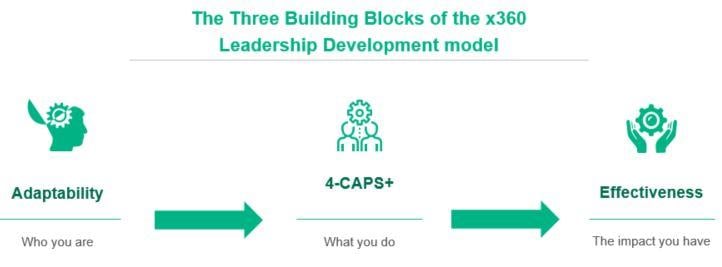
In an age where even Silicon Valley disruptors struggle to keep up, it is more critical than ever for leaders to know themselves. Otherwise how can they learn and develop? Or create a dream team, one that magnifies their strengths and remedies their weaknesses? Or avoid costly blind spots? Exceptional leaders need to have a thorough understanding of the world, their industry, their company and – crucially – themselves.
However, as Benjamin Franklin wrote, “There are three things extremely hard: steel, a diamond and to know one's self.” Based on decades of research on leadership effectiveness and close observation of leadership in practice, we have designed a development and feedback tool called the x360 to facilitate this self-discovery.
Since its launch in 2017, some 2,000 INSEAD programme participants have used it to identify their current leadership signature – their unique way of leading – and to explore how they could further develop in their roles. As with other 360-degree tools, it allows subjects to compare their self-image with how managers, peers, subordinates and external stakeholders perceive them. Our tool’s three core building blocks have been shown to be valid across cultures and types of organisations.

In this first article of a three-part series, we will describe the building block of adaptability, i.e. the “Who you are” component of the x360.
Adaptability and leadership
Our Adaptability Quotient captures decades of research on what differentiates those who can deal with stress and lead through it and those who cannot. This aspect of leadership considers facets of the self that are relatively stable and hard to change. It measures how well respondents are able to adapt and thrive in an exponentially changing context. It contains five parts:
Resilience
In an environment that requires constant experimentation, setbacks are inevitable. Resilience refers to the ability to bounce back from such setbacks and function well in the face of adversity. Those with resilience have strong coping mechanisms and are less prone to anxiety and depression. Low levels of resilience may signal the need to learn how to cope with setbacks or to stay away from more risky leadership work.
Emotional intelligence
When the going gets tough, it is easy to get overcome by negative emotions, to lose one’s temper or to feel overwhelmed. Emotional intelligence refers to the ability to properly monitor and regulate one’s own emotions. It is also about assessing other people’s emotions and their impact. Leaders need to understand when they (or their team members) are incapacitated by anger or fear and need some extra time before making decisions.
Paradoxical thinking
Change tends to exacerbate tensions because resources are often scarce. New priorities create competing demands and can force leaders to choose, for instance, between long-term and short-term gains. A paradoxical mindset is the ability to embrace contradictions and to be energised rather than overwhelmed by them. Leaders who perceive tensions as opportunities are better able to devise fully integrated solutions.
Learning orientation
Some people interpret failure as an opportunity to learn; others view it as a sign of poor performance. A learning orientation refers to the former and it helps leaders quickly adapt both their thinking and actions to changing demands. A strong learning orientation reflects a tendency to seek new knowledge, to keep up with novel ideas and to constantly upgrade one’s skills. In an exponentially changing environment, a learning orientation is critical for breakthrough performance.
Leadership confidence
When constant change becomes the name of the game, top-down leadership is no longer sufficient. A command-and-control style must be replaced by leadership exercised at all levels of the organisation, what we call distributed leadership. But for this to work, individual contributors must have the confidence to step into a leadership role. Leadership confidence refers to the belief in one’s ability to mobilise others and take on the next leadership challenge. Leadership in this fast-paced world is not for the faint-of-heart. Courage and a can-do attitude is required.
Self-awareness and companies’ bottom line
There is no single way to lead, and no leader is perfect. We can’t emphasise enough that the x360 is not an assessment tool. It is a development and feedback instrument that aims to discover your unique strengths, experiences and values so you can build on them. Crafting your own leadership signature is an ongoing process that begins by creating a clear, unvarnished picture of who you are. It is about eliminating your blind spots. Self-awareness is empowering: It will allow you to figure out which skills you will need going forward to become the best leader you can be. Self-knowledge will also enable you to communicate your style to others so that they can more easily work with you.
In our next article, we will discuss the capabilities that enable leaders to thrive and which form the second building block of the x360.
Henrik Bresman is an Associate Professor of Organisational Behaviour at INSEAD and the Academic Director of the INSEAD Global Leadership Centre (IGLC).
Deborah Ancona is the Seley Distinguished Professor of Management, a Professor of Organisation Studies and the Founder of the MIT Leadership Center at the MIT Sloan School of Management.






Anonymous User
27/10/2018, 09.25 am
Most articles are quite informative...would like to see more statistical analysis though...